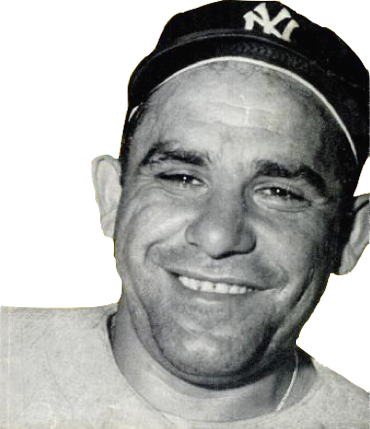Yogi Berra, Public Relations, and Twitter
Had enough of the content tidal wave yet?
The web offers more than "stream of consciousness." It's scream of consciousness -- a term I attribute to the artist Carolyn Kassnoff around 2001 -- but it's more accurate than ever. Every thought, idea, wry observation, or snarky Kardashian slap finds its way into the torrent of social media.
And no place is it more evident than Twitter.
PR pro David Ericson recently blogged about many ways to use Twitter for public relations. It's a good read, describing how Twitter's alliance with Google helps the social media site reach casual web consumers who aren't (yet) Twitter members. So, if you're a PR pro who's working to get recognition for a client's services and products, there's value to including a well-planned Twitter strategy.
But there's another way for PR people to leverage Twitter, although you need a registered Twitter account. It's called listening. Or eavesdropping, if you prefer.
To paraphrase Yogi Berra, you can learn plenty about how to find and pitch journalists and editors just by listening. (Actual Berra-ism: "You can observe a lot just by watching.")
Virtually every journalist is on Twitter, posting about issues, industries, and stories they cover. A few journalists and editors are essentially addicted to social media, posting with astonishing frequency about matters grave and trivial.
We're not talking about monitoring for mentions of your client on social media. That's statistics, and while it may provide useful data points, it doesn't help change attitudes or behaviors, which is what PR tries to achieve.
When I talk about listening, I mean using what we hear to better understand the interests and behaviors of reporters in a given market, industry, or beat. For example, if I'm helping a paddling center promote its business, I'm going to pay close attention to the reporters who Tweet about their outdoor recreation activities -- as well re-tweet the positive experiences of my customers who've enjoyed a day of kayaking.
Yes, there's a scream of consciousness on Twitter -- but it's also a fountain of media insights for PR practitioners willing to spend time listening to what's said.
The web offers more than "stream of consciousness." It's scream of consciousness -- a term I attribute to the artist Carolyn Kassnoff around 2001 -- but it's more accurate than ever. Every thought, idea, wry observation, or snarky Kardashian slap finds its way into the torrent of social media.
And no place is it more evident than Twitter.
PR pro David Ericson recently blogged about many ways to use Twitter for public relations. It's a good read, describing how Twitter's alliance with Google helps the social media site reach casual web consumers who aren't (yet) Twitter members. So, if you're a PR pro who's working to get recognition for a client's services and products, there's value to including a well-planned Twitter strategy.
 |
| Yogi Berra, C. 1956, via Wikimedia Commons |
To paraphrase Yogi Berra, you can learn plenty about how to find and pitch journalists and editors just by listening. (Actual Berra-ism: "You can observe a lot just by watching.")
We're not talking about monitoring for mentions of your client on social media. That's statistics, and while it may provide useful data points, it doesn't help change attitudes or behaviors, which is what PR tries to achieve.
When I talk about listening, I mean using what we hear to better understand the interests and behaviors of reporters in a given market, industry, or beat. For example, if I'm helping a paddling center promote its business, I'm going to pay close attention to the reporters who Tweet about their outdoor recreation activities -- as well re-tweet the positive experiences of my customers who've enjoyed a day of kayaking.
Yes, there's a scream of consciousness on Twitter -- but it's also a fountain of media insights for PR practitioners willing to spend time listening to what's said.